Growing Bok Choy in Containers: Unlock the secrets to a thriving mini-garden, even without a sprawling backyard! Have you ever dreamt of snipping fresh, crisp greens right outside your door, ready to elevate your stir-fries and salads? Well, dream no more! This DIY guide is your passport to cultivating delicious and nutritious Bok Choy, all within the cozy confines of a container.
Bok Choy, also known as Chinese cabbage, boasts a rich history deeply intertwined with Asian cuisine and culture. For centuries, it has been a staple in gardens across China and beyond, prized for its mild flavor and impressive nutritional benefits. But you don’t need to be a seasoned gardener to enjoy this leafy green.
In today’s fast-paced world, access to fresh, healthy produce can be a challenge. That’s where container gardening comes in! Growing Bok Choy in Containers offers a convenient and rewarding way to bring the garden to you, regardless of your living situation. Imagine the satisfaction of harvesting your own organic Bok Choy, knowing exactly where it came from and how it was grown. Plus, it’s a fantastic way to reduce your carbon footprint and connect with nature, even in the heart of the city. I’m excited to share my favorite tips and tricks to help you succeed!
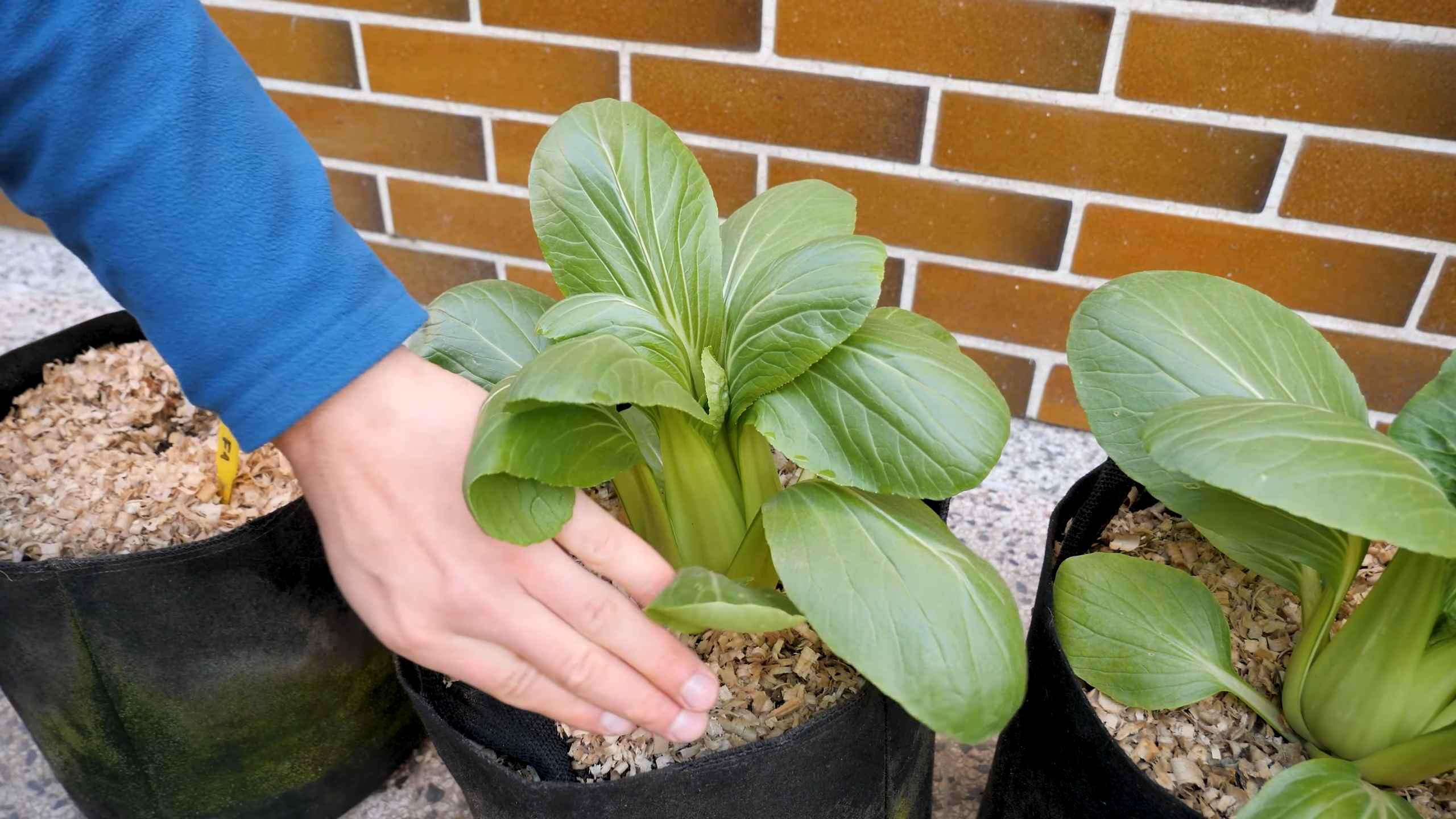
Growing Bok Choy in Containers: A Beginner’s Guide
Hey there, fellow gardening enthusiasts! I’m so excited to share my experience with growing bok choy in containers. It’s surprisingly easy, even if you’re a complete newbie like I was a few years ago. Bok choy, also known as pak choi, is a delicious and nutritious leafy green that’s perfect for stir-fries, soups, and salads. And the best part? You don’t need a huge garden to grow it – containers work wonderfully! Let’s dive in!
What You’ll Need
Before we get started, let’s gather all the necessary supplies. This will make the whole process smoother and more enjoyable.
* Container: Choose a container that’s at least 6 inches deep and 12 inches wide. Bok choy doesn’t have super deep roots, but it does need some space to spread out. I personally love using rectangular planters because they allow me to grow several plants in a row.
* Potting Mix: This is crucial! Don’t use garden soil directly in your containers. It’s too heavy and doesn’t drain well. Opt for a high-quality potting mix that’s specifically designed for containers. I prefer mixes that contain peat moss, perlite, and vermiculite for good drainage and aeration.
* Bok Choy Seeds: You can find bok choy seeds at most garden centers or online. There are several varieties to choose from, including dwarf varieties that are perfect for containers. I’ve had great success with both ‘Shanghai Green’ and ‘Mei Qing Choi’.
* Watering Can or Hose: You’ll need a way to water your bok choy regularly. A watering can with a gentle rose head is ideal, but a hose with a spray nozzle will also work.
* Fertilizer: Bok choy is a heavy feeder, so you’ll need to fertilize it regularly. I recommend using a balanced, water-soluble fertilizer, like a 10-10-10 or 20-20-20 formula. Alternatively, you can use an organic fertilizer like compost tea or fish emulsion.
* Optional:
* Seed Starting Tray: If you want to get a head start on the growing season, you can start your seeds indoors in a seed starting tray.
* Heat Mat: A heat mat can help speed up germination, especially in cooler climates.
* Grow Lights: If you’re starting your seeds indoors, you’ll need grow lights to provide adequate light.
* Slug and Snail Bait: These pests love bok choy, so you might want to have some slug and snail bait on hand. I prefer using organic options like diatomaceous earth.
Planting Your Bok Choy
Now for the fun part – planting! This is where you’ll actually get your hands dirty and start bringing your bok choy dreams to life.
1. Prepare Your Container: Fill your container with potting mix, leaving about an inch of space at the top. Gently pat down the soil to remove any air pockets.
2. Sow Your Seeds: Bok choy seeds are small, so be careful not to plant them too deeply. Sprinkle the seeds evenly over the surface of the soil, spacing them about an inch apart. Then, cover them with a thin layer of potting mix (about ¼ inch).
3. Water Gently: Use your watering can or hose to gently water the soil. Be careful not to wash away the seeds. The soil should be moist but not soggy.
4. Provide Warmth and Light: If you’re starting your seeds indoors, place the container on a heat mat and under grow lights. If you’re planting directly in the container outdoors, choose a spot that gets at least 4-6 hours of sunlight per day.
5. Germination: Bok choy seeds typically germinate in 4-7 days. Keep the soil consistently moist during this time.
Caring for Your Bok Choy
Once your bok choy seedlings emerge, it’s time to start caring for them. This involves watering, fertilizing, and protecting them from pests.
1. Watering: Bok choy needs consistent moisture to thrive. Water your plants regularly, especially during hot, dry weather. Check the soil moisture by sticking your finger into the soil. If the top inch feels dry, it’s time to water. Avoid overwatering, as this can lead to root rot.
2. Thinning: Once your seedlings have a few true leaves (the leaves that look like miniature bok choy leaves), you’ll need to thin them out. This means removing some of the seedlings to give the remaining plants enough space to grow. Aim for a spacing of about 6-8 inches between plants. Don’t throw away the thinned seedlings! You can eat them as microgreens.
3. Fertilizing: As I mentioned earlier, bok choy is a heavy feeder. Fertilize your plants every 2-3 weeks with a balanced, water-soluble fertilizer. Follow the instructions on the fertilizer package. If you’re using an organic fertilizer, you can apply it more frequently.
4. Sunlight: Bok choy prefers full sun (6-8 hours of sunlight per day), but it can tolerate partial shade (4-6 hours of sunlight per day). In hot climates, providing some afternoon shade can help prevent bolting (premature flowering).
5. Pest Control: Keep an eye out for pests like slugs, snails, aphids, and cabbage worms. Handpick any pests you see, or use organic pest control methods like diatomaceous earth, insecticidal soap, or neem oil. I’ve found that a physical barrier, like copper tape around the container, can be effective against slugs and snails.
6. Weed Control: Keep your container free of weeds. Weeds compete with your bok choy for nutrients and water. Hand-pull any weeds that you see.
Harvesting Your Bok Choy
The best part of growing your own bok choy is, of course, harvesting it! You can start harvesting your bok choy when the leaves are about 6-8 inches long.
1. Harvesting Individual Leaves: You can harvest individual leaves as needed, starting with the outer leaves. This will allow the inner leaves to continue growing. Simply cut the leaves off at the base with a sharp knife or scissors.
2. Harvesting the Whole Plant: If you want to harvest the entire plant, cut it off at the base with a sharp knife. You can harvest the whole plant when it’s about 8-12 inches tall.
3. Succession Planting: To ensure a continuous harvest, plant new seeds every 2-3 weeks. This is called succession planting.
Troubleshooting
Even with the best care, you might encounter some problems while growing bok choy. Here are some common issues and how to address them:
* Bolting: Bolting is when the plant prematurely flowers. This can happen when the weather gets too hot or when the plant is stressed. To prevent bolting, provide some afternoon shade and keep the soil consistently moist. If your bok choy bolts, the leaves will become bitter.
* Yellowing Leaves: Yellowing leaves can be a sign of nutrient deficiency, overwatering, or underwatering. Check the soil moisture and fertilize your plants if necessary.
* Pest Damage: As mentioned earlier, bok choy is susceptible to several pests. Regularly inspect your plants for pests and take action as soon as you see them.
* Root Rot: Root rot is caused by overwatering. Make sure your container has good drainage and avoid overwatering.
Choosing the Right Bok Choy Variety
There are many different varieties of bok choy to choose from, each with its own unique characteristics. Here are a few popular varieties:
* Shanghai Green: This is a popular variety with light green leaves and thick, juicy stems. It’s known for its mild flavor and crisp texture.
* Mei Qing Choi: This is a dwarf variety that’s perfect for containers. It has dark green leaves and short, thick stems.
* Joi Choi: This variety has dark green leaves and white stems. It’s known for its heat tolerance and disease resistance.
* Rosie Choi: This variety has beautiful reddish-purple leaves and green stems. It’s a great choice for adding color to your garden.
Extending Your Growing Season
If you live in a climate with a short growing season, there are several things you can do to extend your bok choy growing season:
* Start Seeds Indoors: Starting your seeds indoors will give you a head start on the growing season.
* Use a Cold Frame or Greenhouse: A cold frame or greenhouse can protect your plants from frost and extend the growing season.
* Choose Cold-Hardy Varieties: Some bok choy varieties are more cold-hardy than others. Choose varieties that are known for their
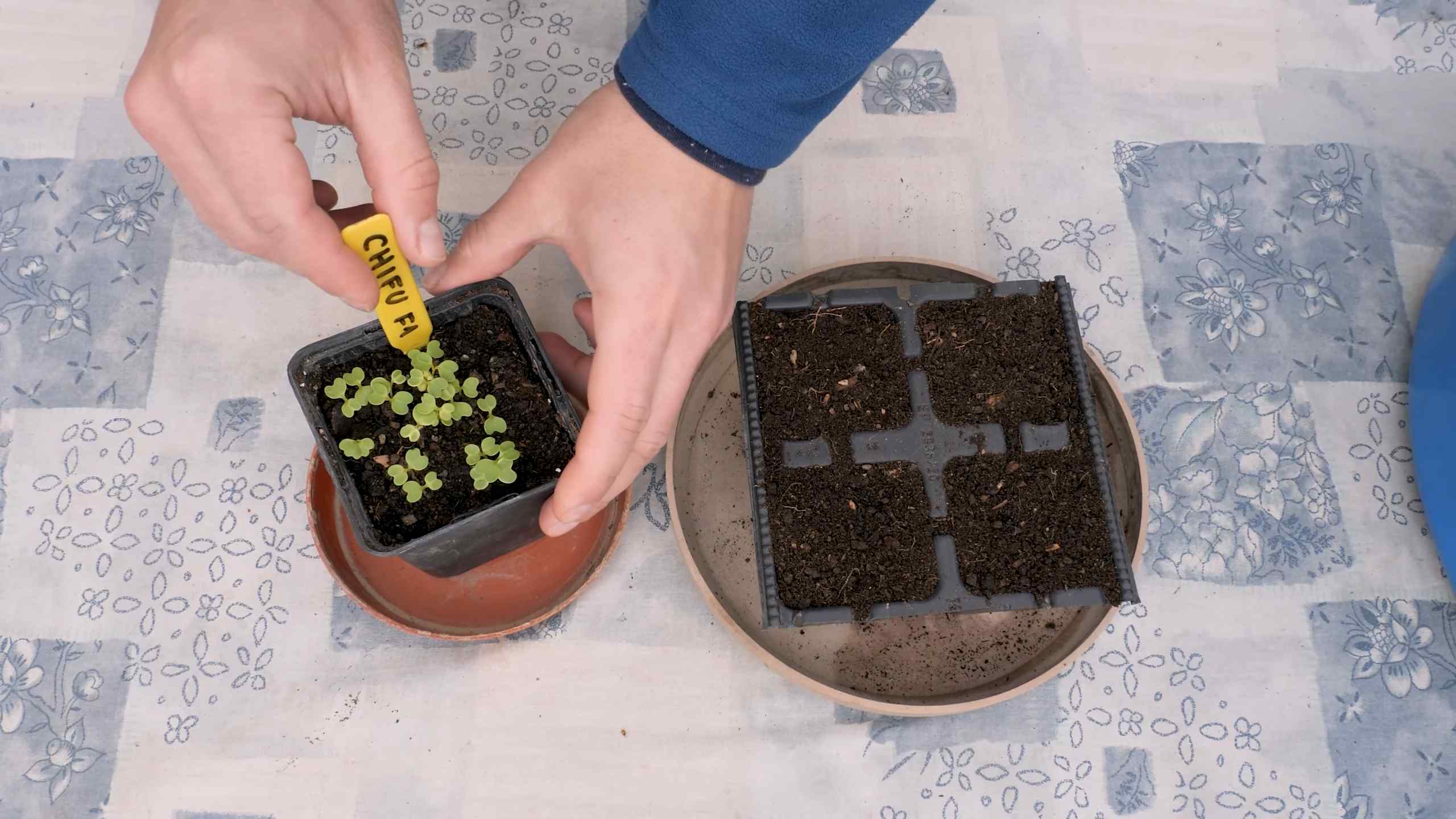
Conclusion
So, there you have it! Growing your own bok choy in containers is not only achievable, but it’s a rewarding experience that brings fresh, flavorful greens right to your doorstep. We’ve walked through the simple steps, from selecting the right container and soil to nurturing your plants and harvesting your bounty. But why is this DIY trick a must-try?
Firstly, consider the unparalleled freshness. Store-bought bok choy simply can’t compare to the vibrant taste and crisp texture of greens harvested moments before they hit your plate. You control the entire process, ensuring your bok choy is grown without harmful pesticides or herbicides. This means healthier, more nutritious meals for you and your family.
Secondly, container gardening offers incredible flexibility. Whether you have a sprawling backyard or a tiny balcony, you can cultivate your own bok choy. It’s a perfect solution for urban dwellers and anyone with limited space. Plus, moving your containers allows you to optimize sunlight exposure and protect your plants from harsh weather conditions.
Thirdly, growing bok choy in containers is surprisingly easy and cost-effective. Once you have your initial setup, the ongoing costs are minimal. You’ll save money on groceries and enjoy the satisfaction of nurturing your own food source. It’s a sustainable and environmentally friendly way to add fresh produce to your diet.
But the benefits don’t stop there! Growing your own food is a therapeutic and educational experience. It connects you with nature, teaches you about plant life cycles, and provides a sense of accomplishment. It’s a fantastic activity for families, offering children a hands-on learning opportunity about where their food comes from.
Ready to take your bok choy growing to the next level? Consider these variations:
* Succession Planting: Plant new seeds every few weeks to ensure a continuous harvest throughout the growing season.
* Companion Planting: Plant bok choy alongside other compatible vegetables like radishes, carrots, or lettuce to deter pests and improve growth.
* Different Varieties: Experiment with different varieties of bok choy, such as Shanghai bok choy (with its pale green stems) or baby bok choy (for smaller, more tender leaves).
* Vertical Gardening: If space is truly limited, explore vertical gardening options like hanging baskets or stacked planters to maximize your growing area.
Don’t be intimidated by the prospect of growing your own vegetables. Bok choy is a relatively easy plant to cultivate, even for beginners. With a little care and attention, you’ll be enjoying delicious, homegrown bok choy in no time.
We wholeheartedly encourage you to try this DIY trick and experience the joy of growing your own food. It’s a rewarding, sustainable, and delicious way to enhance your life. And most importantly, it allows you to have complete control over the quality and freshness of your bok choy.
So, grab your containers, soil, and seeds, and get ready to embark on your bok choy growing adventure! We’re confident that you’ll be amazed by the results.
Finally, we’d love to hear about your experiences! Share your tips, tricks, and photos in the comments below. Let’s create a community of bok choy enthusiasts and inspire others to embrace the joys of container gardening. Happy growing!
Frequently Asked Questions (FAQ)
What is the best container size for growing bok choy?
The ideal container size for growing bok choy is at least 6-8 inches deep and wide. This provides enough space for the roots to develop properly. If you’re planning to grow multiple bok choy plants in the same container, choose a larger container that allows for adequate spacing between plants (about 6 inches apart). A rectangular container or a large pot works well. Remember that drainage is crucial, so ensure your container has drainage holes.
What type of soil is best for growing bok choy in containers?
Bok choy thrives in well-draining, fertile soil that is rich in organic matter. A good potting mix specifically formulated for vegetables is an excellent choice. You can also create your own mix by combining equal parts of compost, peat moss (or coconut coir), and perlite or vermiculite. The compost provides nutrients, the peat moss or coconut coir retains moisture, and the perlite or vermiculite improves drainage. Avoid using garden soil in containers, as it can become compacted and hinder root growth.
How much sunlight does bok choy need?
Bok choy prefers partial shade, especially in warmer climates. Aim for at least 4-6 hours of sunlight per day. In hotter regions, providing afternoon shade can prevent the leaves from scorching. If you’re growing bok choy indoors, place it near a sunny window or use grow lights to supplement natural light. Insufficient sunlight can result in leggy growth and reduced yields.
How often should I water my bok choy plants?
Water your bok choy plants regularly, keeping the soil consistently moist but not waterlogged. Check the soil moisture level daily, especially during hot weather. Water deeply when the top inch of soil feels dry to the touch. Avoid overhead watering, as it can promote fungal diseases. Instead, water at the base of the plant. Mulching around the plants can help retain moisture and suppress weeds.
What are some common pests and diseases that affect bok choy, and how can I prevent them?
Common pests that affect bok choy include aphids, cabbage worms, and flea beetles. To prevent pest infestations, inspect your plants regularly and remove any pests you find by hand. You can also use insecticidal soap or neem oil to control pests. Row covers can provide a physical barrier against pests. Common diseases include downy mildew and clubroot. To prevent diseases, ensure good air circulation, avoid overhead watering, and practice crop rotation. If you notice signs of disease, remove affected leaves promptly.
When and how should I harvest my bok choy?
You can harvest bok choy at any stage of growth, depending on your preference. Baby bok choy can be harvested as early as 30 days after planting, while mature bok choy can be harvested in 45-60 days. To harvest, cut the entire plant at the base with a sharp knife, or harvest individual leaves as needed, starting with the outer leaves. Regular harvesting encourages continued growth.
Can I grow bok choy indoors?
Yes, you can grow bok choy indoors, especially if you have a sunny window or grow lights. Choose a container that is at least 6 inches deep and wide, and use a well-draining potting mix. Provide adequate sunlight or supplemental lighting, and water regularly. Indoor-grown bok choy may not grow as large as outdoor-grown bok choy, but it can still provide a fresh and flavorful harvest.
How do I prevent bok choy from bolting (going to seed)?
Bolting is when the plant prematurely flowers and produces seeds, which can make the leaves bitter. Bolting is often triggered by hot weather or stress. To prevent bolting, plant bok choy in early spring or late summer to avoid the hottest months. Provide afternoon shade, water regularly, and harvest regularly to encourage continued leaf production. Choose bolt-resistant varieties of bok choy if you live in a warm climate.
Is bok choy a good source of nutrients?
Yes, bok choy is a highly nutritious vegetable. It is an excellent source of vitamins A and C, as well as calcium, potassium, and fiber. It also contains antioxidants and other beneficial plant compounds. Adding bok choy to your diet can contribute to overall health and well-being.
Can I grow bok choy from seed or transplants?
You can grow bok choy from either seed or transplants. Starting from seed is generally more economical, but transplants can provide a head start, especially in areas with short growing seasons. If starting from seed, sow seeds directly into your container about ¼ inch deep. If using transplants, choose healthy, vigorous plants with well-developed root systems.

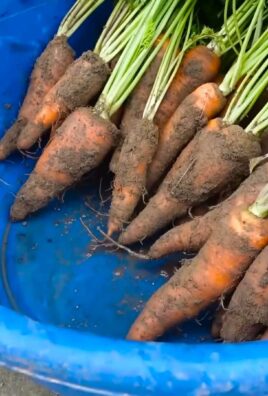
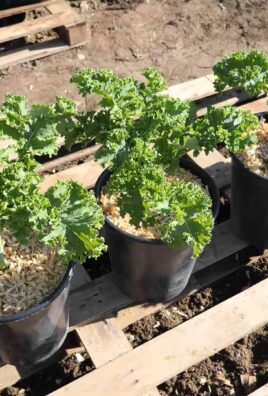
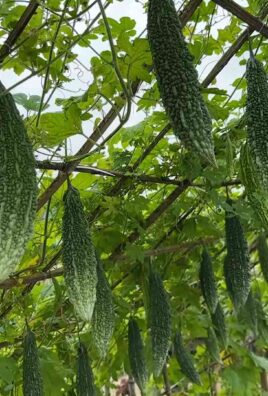
Leave a Comment